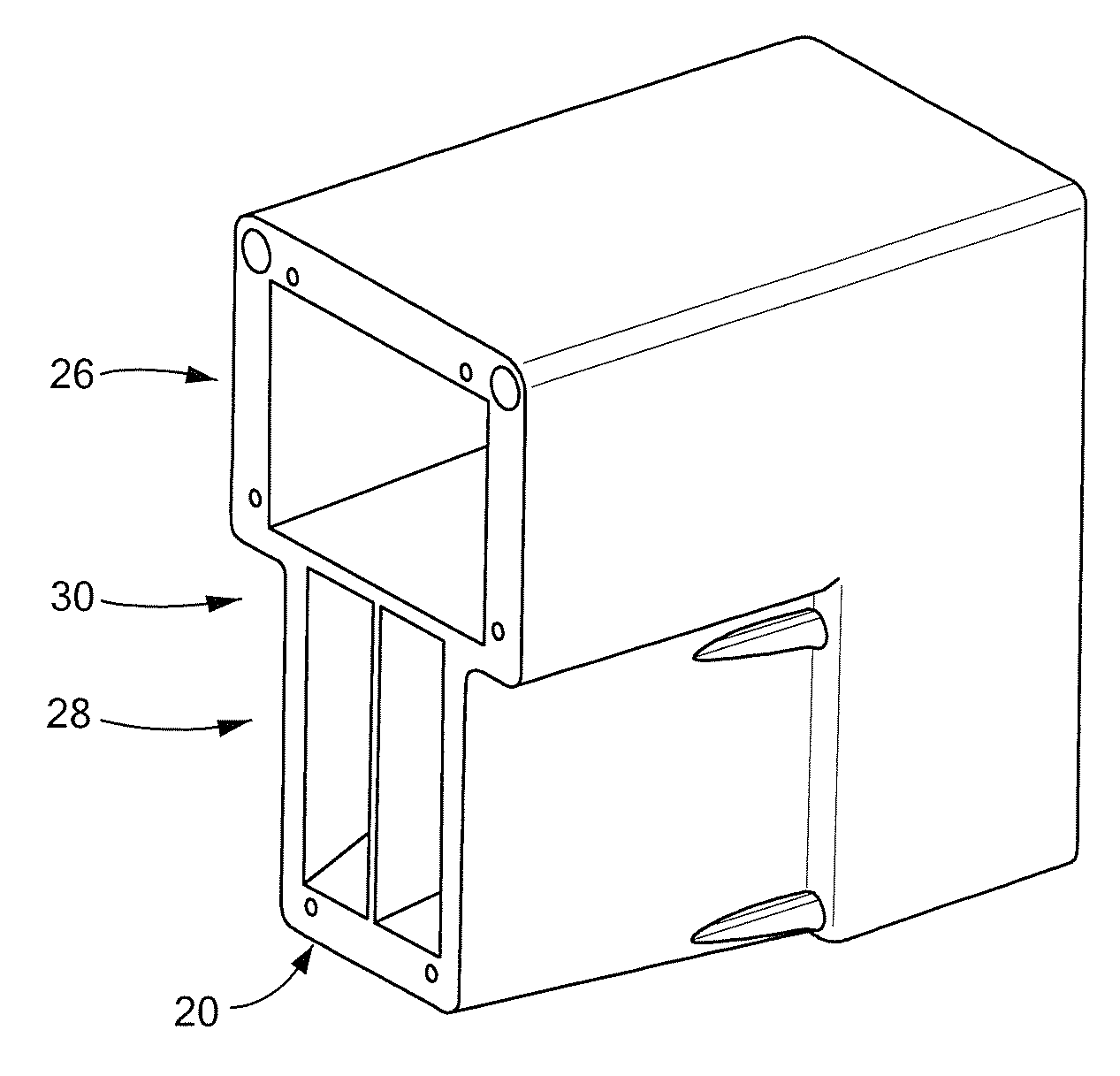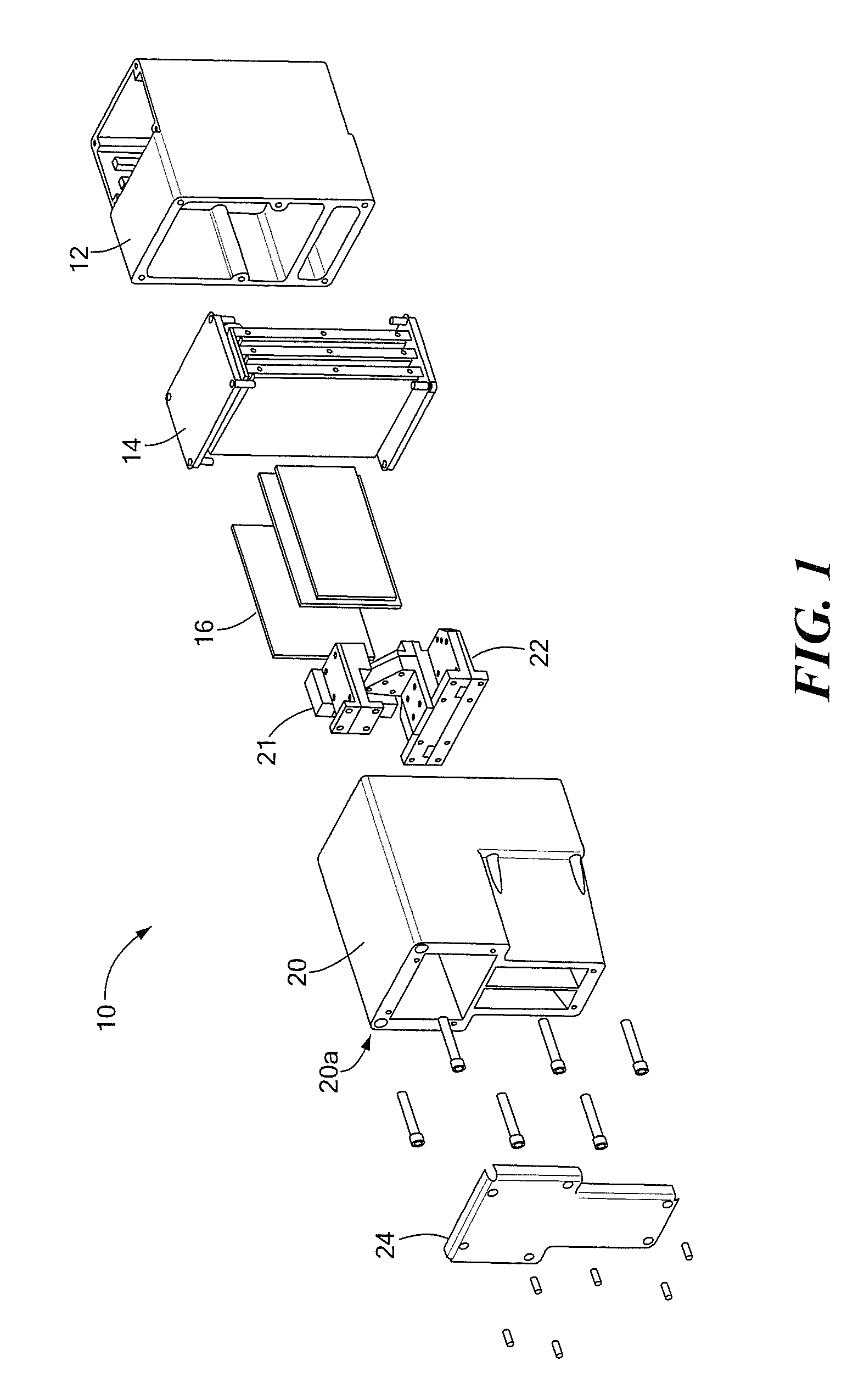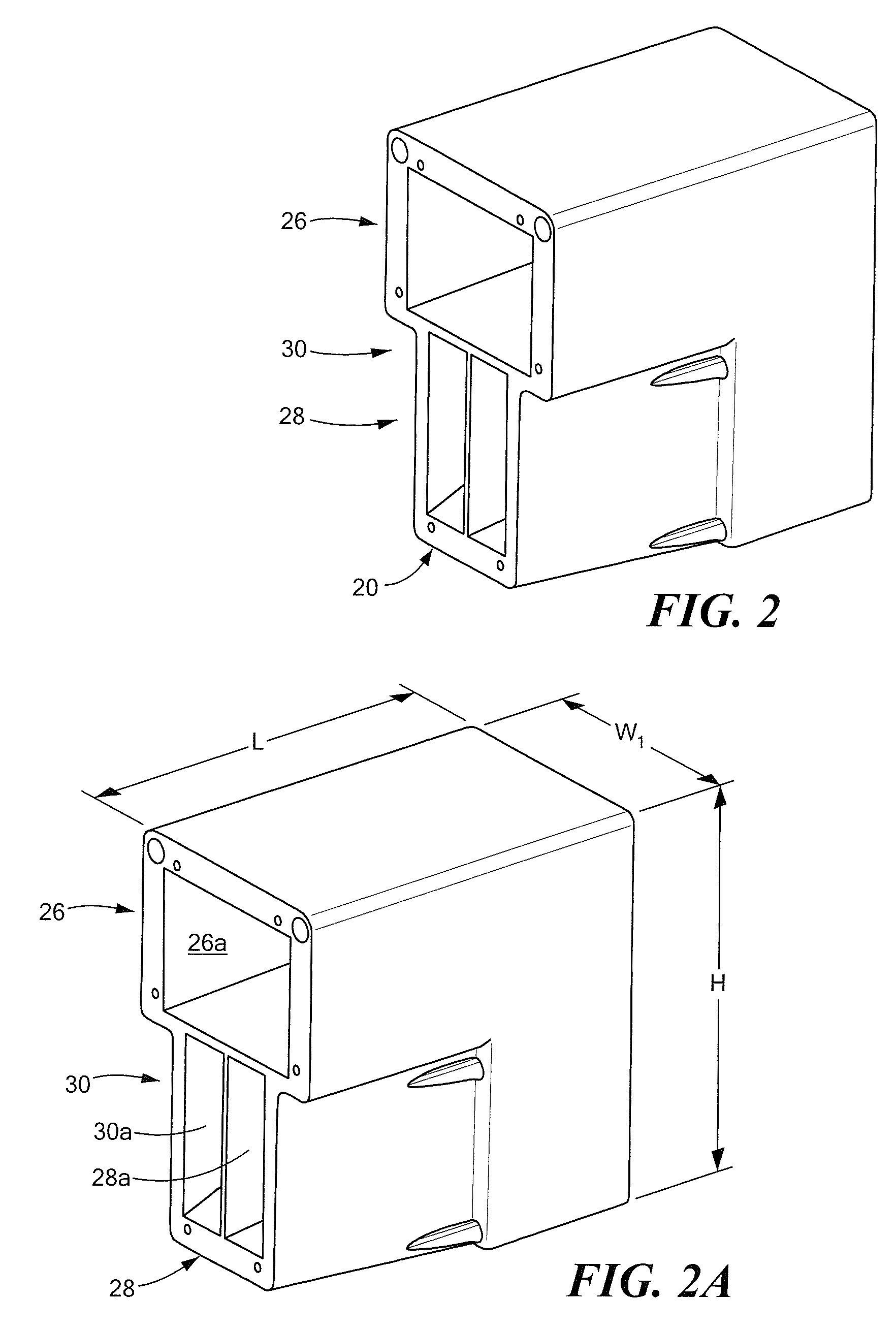Small Aperture Interrogator Antenna System Employing Sum Difference Azimuth Discrimination Techniques
an interrogator antenna and sum difference azimuth discrimination technology, applied in the field of radio frequency (rf) antennas, can solve the problem of grating lobes and achieve the effect of cost saving
- Summary
- Abstract
- Description
- Claims
- Application Information
AI Technical Summary
Benefits of technology
Problems solved by technology
Method used
Image
Examples
Embodiment Construction
[0036]Referring now to FIG. 1, a light weight vehicle Crew Served Combat ID (CSCID) 10 includes a chassis 12 having a miniaturized control interface electronics module (MCM) 14 coupled thereto. The MCM 14 directs a transceiver, 16, an antenna matching network 21, 22, a horn antenna assembly 20, and a polarizer / cover 24 to transmit either a sum pattern by directing the transceiver output to a sum port of the matching network 21, 22 or a difference pattern, by directing the transceiver output to a difference port of the matching network 21,22. In one particular embodiment, the output of transceiver 16 is coupled to the matching network sum port via a direct connection between the transceiver and the sum horn. The sum and difference patterns are sequenced with a specific time duration for each which is controlled by the MCM 14.
[0037]Transceiver 16 is coupled to the MCM 14 and horn antenna assembly 20 is coupled to transmit signals to / from MCM 14 and antenna matching networks 21, 22 are...
PUM
 Login to View More
Login to View More Abstract
Description
Claims
Application Information
 Login to View More
Login to View More - R&D
- Intellectual Property
- Life Sciences
- Materials
- Tech Scout
- Unparalleled Data Quality
- Higher Quality Content
- 60% Fewer Hallucinations
Browse by: Latest US Patents, China's latest patents, Technical Efficacy Thesaurus, Application Domain, Technology Topic, Popular Technical Reports.
© 2025 PatSnap. All rights reserved.Legal|Privacy policy|Modern Slavery Act Transparency Statement|Sitemap|About US| Contact US: help@patsnap.com



